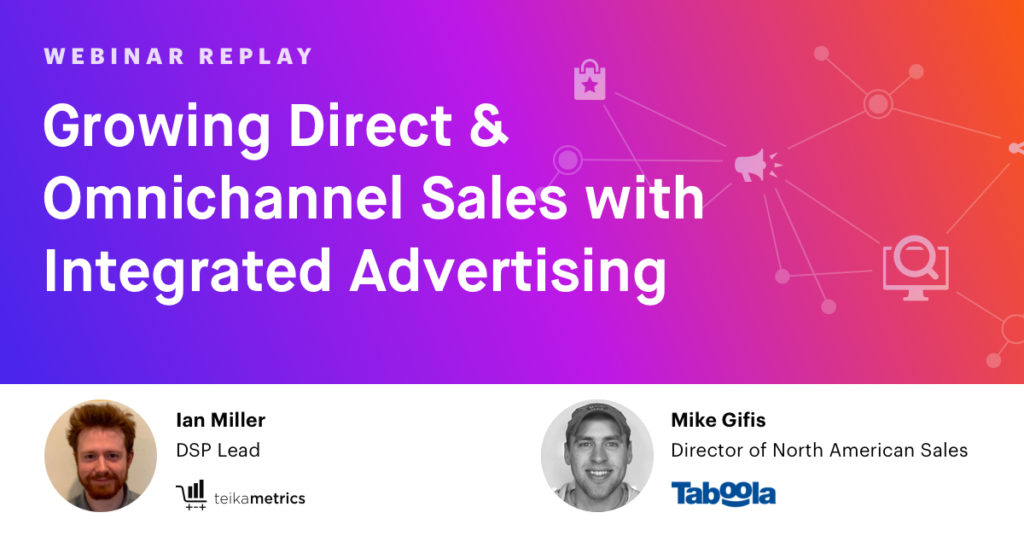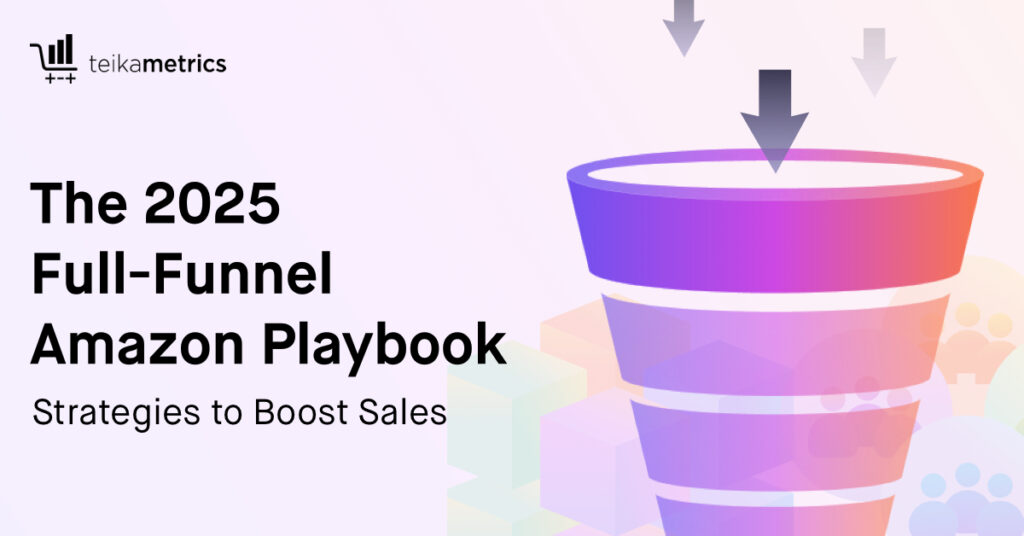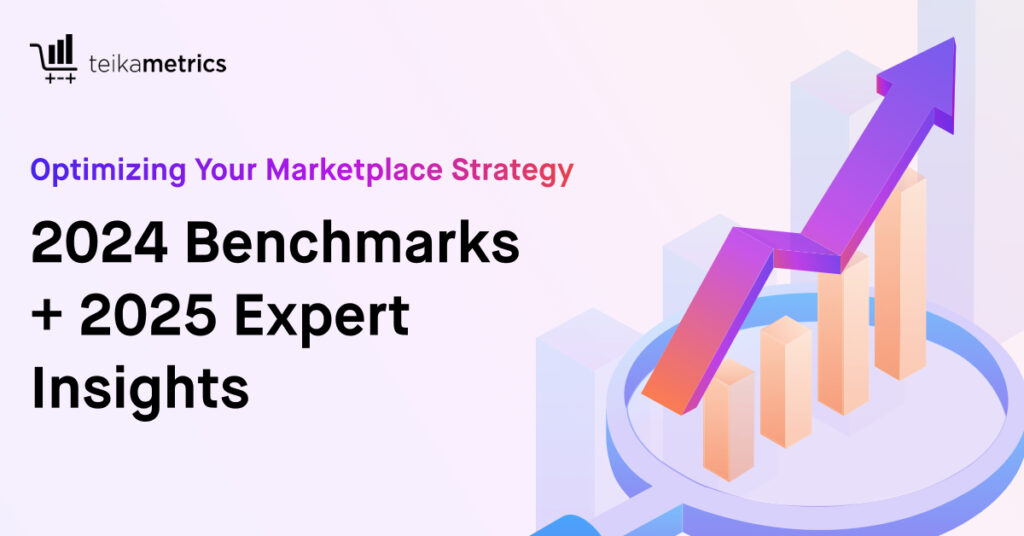Growing both your Amazon and D2C business requires advertising, but you don’t need to think of each channel as isolated.
Ads promoting your D2C site, alongside ads on and off Amazon, can both drive omnichannel growth as long as you have the right strategy.
In this webinar, Ian Miller, DSP Lead, Teikametrics, and Mike Gifis, Director of North American Sales, Taboola, discuss where you should focus as you scale your Amazon and D2C advertising, new uses for Amazon’s DSP, along with actionable tips for driving success.
Webinar Takeaways
- The retail media environment has exploded
- There are now more growth openings for ecommerce brands
- Solely focusing on Amazon search limits your ability to scale
- When you expand to new channels, think critically about targeting and creative
- Work with platform-specific experts where you can
- Match your target audience segment to your goals
- Pick success criteria for initiatives that track to your goals for each campaign
Show Links
- Connect with Mike on LinkedIn and check out Taboola
- Connect with Ian and Andrew on LinkedIn
- Keep up with Teikametrics on LinkedIn or Twitter
- Read our blog: Amazon DSP: Why and How To Use It
- Watch our webinar: Making Prime Day Last With Amazon DSP
Watch the Getting The Growing Direct & Omnichannel Sales Replay:
Discussion Highlights
Digital media has evolved quickly
Mike took us through a brief history of retail and digital media, reaching back to Google as a primary source of traffic a decade ago, to the emergence around 2013 of Facebook as a major player, to more recent major retail media players entering the field.
“Going back, let’s call it ten, fifteen years here, you had the crop up of Google as the primary source of traffic for the average publisher. And they had to worry about algorithm changes at Google. Not too long after that, in about 2013, Facebook took over as the number one source of traffic for the average publisher. And so this became a bit of a platform war in terms of where users spend time. And so that is true of all the activities you might expect a user to be doing in digital, which could be consuming content messaging, gaming, and of course the shopping as well.” – Mike Gifis
Retail media and digital media are converging
Amazon and Walmart have become major players in retail marketing. Others are on the rise, like Target, Home Depot, and Walgreens. These platforms have seen rapid growth in ad spend over the last five years. Amazon is now the number two search ad revenue company, trailing only behind Google. When the retailer is the digital ad provider, there’s a convergence of priorities.
“A lot of what’s important to publishers primarily being reach, meaning access to the user, and then yield, meaning a way to monetize their time spent with that, a lot of those things are equally important to the publisher or to the retail media platform.” – Mike Gifis
Marketplaces can reach beyond their walls with audience extension
Retailers like Amazon or Walmart offer ad units such as Sponsored Products that remain within the bounds of platforms owned and operated by the retailer. However, Mike explained that “audience extension” is a way of using shopper data to reach those audiences on social media and the open web. Sellers can use advertising native to Amazon or Walmart for this, or use another provider like Taboola.
“That portion of this business that I was referring to is audience extension, where you can tap these platforms and their data on their shoppers to address those users elsewhere on the web, whether that’s the open web as we refer to it or across social platforms where users are certainly spending time. Walmart recruited the Trade Desk as part of that initiative to really leapfrog that aspect of their business and overall the tech behind their offering. Amazon, which has been in this game a little bit longer, has their own dedicated DSP that they’ve built and a network of publishers through Amazon publisher services. So both serving the same purpose of helping take your campaigns beyond their walls.” – Mike Gifis
Publishers are becoming not only the point of inspiration but also the point of sale
Social media platforms have become a huge source of inspiration for purchases. Mike said that one in five individuals have purchased a product that they discovered on a social platform. They have increasingly also built out the ability to complete the sale within the platform.
“More than one in five individuals have purchased a product that they discovered on a social platform. Anyone on this call can probably raise their hand and say, I’ve done that too…This is still such a new capability, that social platforms offer the ability to actually transact without leaving the platform… Of those users, almost 30% have actually made a transaction without leaving the social platform already. That to me is really interesting. You may have heard the term “headless ecommerce” or “frictionless ecommerce” or “discovery commerce”, all wrapped up in this trend that we’re seeing. That’s true of social. That’s where you may have heard it most, but it’s also true of touchpoints that Google powers. It’s also, in a very fast-moving way, becoming true of the open web as well where to Taboola plays.” – Mike Gifis
Amazon sellers need to find ways to drive sales
Ian talked about how for Amazon sellers, it’s important to drive traffic to listings. You have to win top of search, because most of the sales on Amazon come from the top three search results. And you have to maintain organic ranking.
“Most of the traffic is being driven by the top three organic results on Amazon. It’s in both category search terms and for branded search terms. Those are really what’s driving so much of the sales. So really the question becomes, how do we get there? How do we drive sales? Because as you’re probably aware on Amazon sales beget sales.” -Ian Miller
Thinking bigger means thinking across channels
To increase traffic Ian suggests thinking across channels, investing in a full funnel of ads which includes but is not limited to search. It can mean using Amazon DSP to drive sales on Amazon or DTC, as well as using services like Taboola to drive traffic to those same destinations.
“It’s not just thinking about sponsored product ads and on-channel ads. It’s about thinking about driving more custom display ads on Amazon, off Amazon, and even in the open web like Mike is talking about, through services like Taboola to really drive traffic wherever the customers are and get them to purchase on the platforms that make sense for your business, whether that’s a direct channel purchase that’s best for your margins or whether that’s an Amazon or Walmart or another retailer to grow your presence on those retailers.” -Ian Miller
You’ll need to make adjustments to ads to make them work off Amazon
Mike pointed out that users are in a different mindset when they’re off Amazon than when they’re on it, so the ads may need to be adapted to that mindset. Likewise, keywords that perform on Amazon may not work if ported directly to other contexts.
“Once you’re outside of retail media or outside of the retail environment, there’s a big difference in consumer mindset. And so that all together could mean that you’re tailoring your campaigns towards different goals. But it also means that if you have similar goals such as to drive ROAS on that campaign, for instance, whether that’s through your own DTC channel or through one of the retail media platforms, we need to take those differences into account when it comes to the ad experience for the user, putting yourself in the user’s shoes.” -Mike Gifis
Taboola can “onboard” an existing audience
For sellers with a strong DTC business and an existing audience, Taboola can do what they call “onboarding” that audience to analyze it and compare it to their enormous audience database to understand your shoppers’ habits and interests.
“For anyone who does have an existing DTC operation or audiences, a common tactic for us is what’s called onboarding those audiences, and then helping you understand out of the overall readership in the U.S. where do your users over-index? And so for instance, we might see with one advertiser, their list of users tend to read a lot more about sports, whereas another advertiser or perhaps another list from an advertiser, those users, however that cohort’s defined, might skew towards other topics.” -Mike Gifis
Choose goals that match the place in the funnel
Ian explained that many of these campaigns will be top-of-funnel with a goal of awareness. In that case, your metrics to focus on should be CTR or VCR. Other campaigns at the mid-funnel will have a goal of consideration. For these focus on metrics like CTR, CPC, and site engagement. And finally, at the lower part of the funnel and with retargeting, you’re driving for a decision to purchase and your metrics might be CPC, ROAS, or incremental sales.
“I think we should talk about how we determine success on all of these channels. It’s more about how close the customer is to purchase, right? There are customers who are in the brand awareness, who maybe are in a top of funnel. Maybe they’re not quite in a market for your product, and you’re trying to bring awareness to your brand. You’re going after an adjacent market or something like that… It’s really down in the mid-funnel and lower funnel where you can start thinking, am I getting engagement? Am I getting a good click-through rate? Am I creating a lot of detail page views? What’s my CPC look like?… And then in the lower funnel, whether they’re on or off your platform, thinking about return on investment, thinking about the customers, who’ve become detail page viewers, thinking about customers who are engaged with your brand. Once you’ve gotten the customer down there, you can start thinking about ROAS and driving your incremental sales.” -Ian Miller
Use Amazon DSP to target custom audiences
You can use custom Amazon DSP audiences based on your goals. Use lifestyle segments to grow brand awareness, in-market segments to increase consideration, and retargeting segments to drive purchases.
“The goal with the lifestyle and the market segments is to get people to come to purchase, to get them to click through, to get them to become detail page viewers, because then you can retarget them. Then you can close the loop. Then you can drive them to purchase…More than likely, we’re going to need to serve them with more than one ad. If you can get them to become detail page viewers, if you can get them in, then you can show them a custom ad that’s a little bit more focused on purchase, the one that has a direct purchase button or one that’s targeted and optimized towards an audience that is ready to convert.” -Ian Miller





